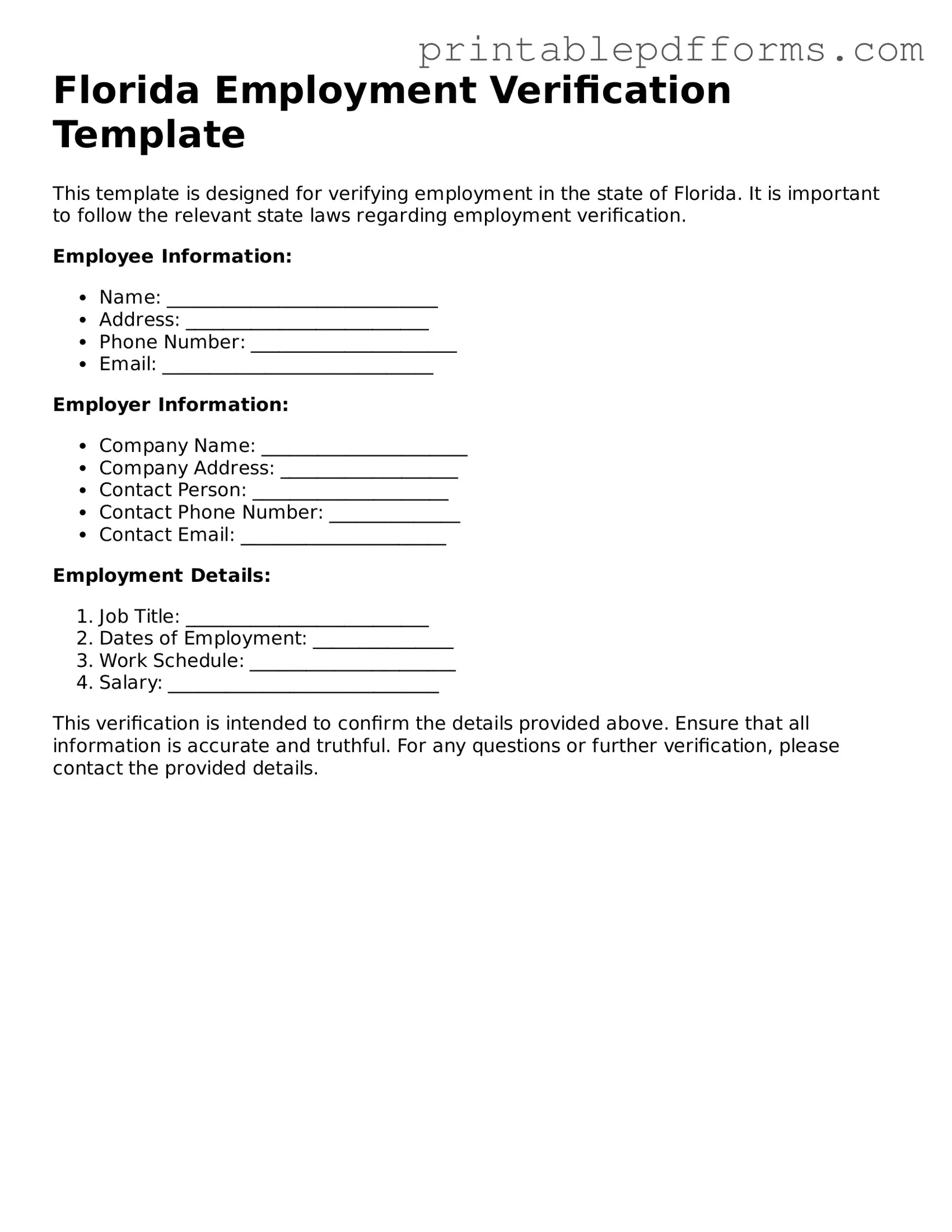The Florida Employment Verification form is a document used to confirm an individual's employment status. It is often required by various entities, such as lenders, landlords, or government agencies, to verify that a person is employed and to gather information about their job title, salary, and duration of employment.
Typically, the employee's current or former employer completes the form. However, the employee may also provide a copy of the form to facilitate the verification process. This form is essential when an employee applies for loans, housing, or other services that require proof of income.
The Employment Verification form generally requires the following information:
-
Employee's full name
-
Employee's job title
-
Dates of employment
-
Current salary or hourly wage
-
Employer's contact information
Additional details may be included based on the specific requirements of the requesting party.
While the form is not legally mandated, it is often requested by third parties as part of their verification process. Employers are encouraged to provide accurate and timely information to support their employees in obtaining necessary services.
The form can typically be obtained from various sources, including:
-
Your employer's human resources department.
-
Online legal form websites.
-
State or local government websites that provide employment resources.
Make sure to use the most current version of the form to ensure compliance with any updates or changes.
If your employer is unwilling to complete the Employment Verification form, consider discussing the situation with your HR department. They may have policies in place regarding employment verification. If necessary, you can also request a letter of employment, which can serve a similar purpose.
How long does it take to process the Employment Verification?
The processing time for an Employment Verification request can vary. Typically, it may take anywhere from a few days to a couple of weeks, depending on the employer's policies and workload. It is advisable to request verification well in advance of any deadlines.
Yes, the Employment Verification form can be used for multiple requests, as long as the information remains accurate and relevant. However, each request may have specific requirements, so it's essential to ensure that the form meets the needs of the requesting party.
If you notice errors on the Employment Verification form, contact your employer immediately to request corrections. Accurate information is crucial, as inaccuracies can lead to complications in loan applications, housing requests, or other important matters.
